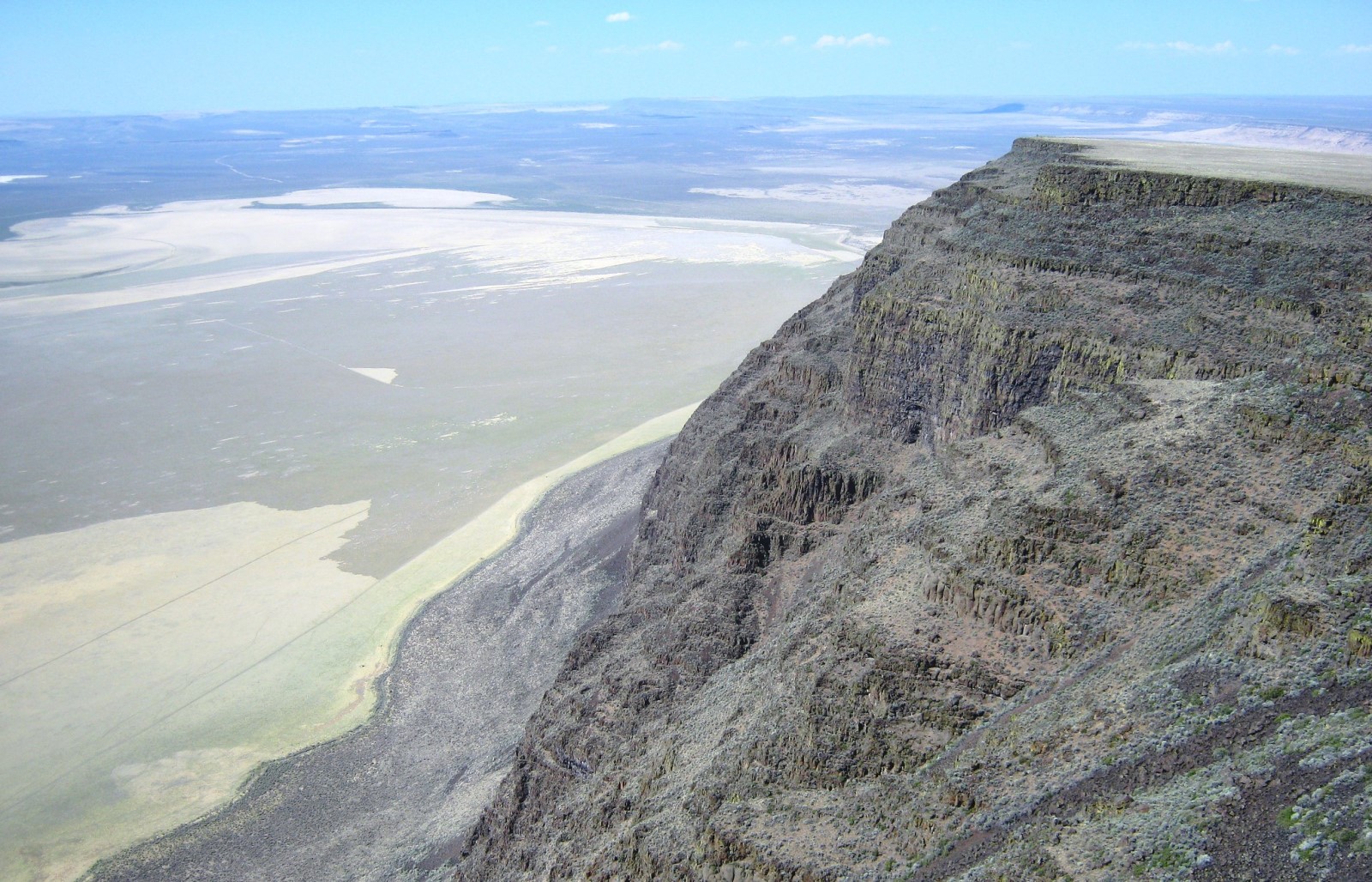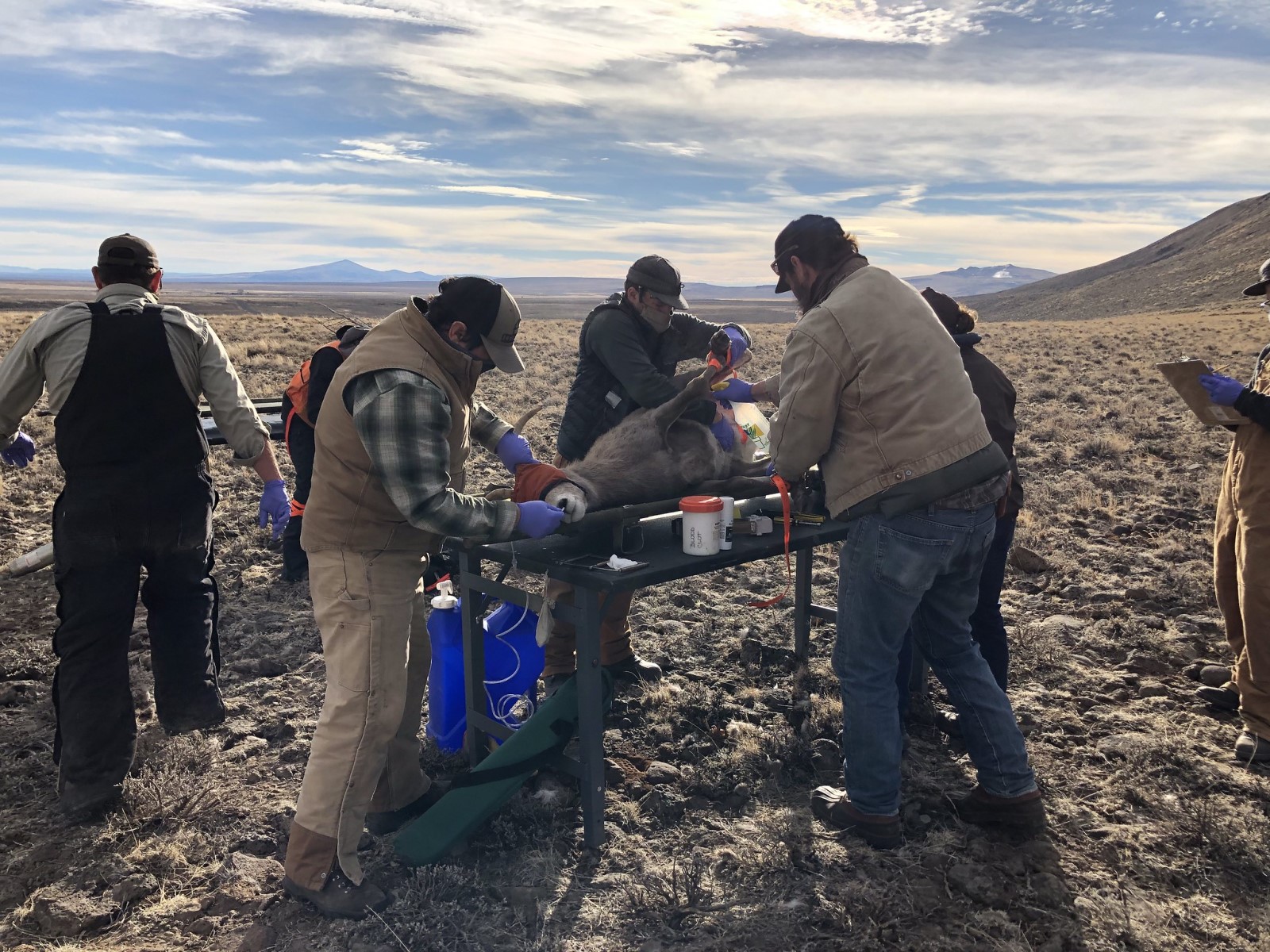This second installment of a four-part series on the Hart Mountain National Antelope Refuge is all about the refuge’s California bighorn sheep population. Read on to learn how these public lands became the first site for the reintroduction of this iconic species in Oregon—and the challenges bighorns face there today.
If you climb to the top of 8,017-foot Warner Peak on the Hart Mountain National Antelope Refuge and look west, down into the cliffs and crags that descend more than 3,000 feet to the valley floor, you will undoubtedly gain a new appreciation for the rugged habitat preferences of one of North America’s most iconic game species: the California bighorn sheep. While the refuge is best known for its namesake population of pronghorns, the long and complex history of bringing bighorns back to Oregon, and managing them, highlights the importance of this high-desert habitat to wildlife.

As any wild sheep enthusiast will tell you, Oregon is home to two native subspecies: California bighorns and Rocky Mountain bighorns. Historically, California bighorns were the most abundant and found throughout the steep, rocky country of southeast Oregon, as well as in the watersheds of the Deschutes and John Day Rivers. Oregon’s Rocky Mountain bighorns occupied the more timbered country of the Blue and Wallowa Mountains in the northeast corner of the state.
Wild sheep were an important food source for Native Americans and then, later, for settlers during the homesteading era. As Oregon’s non-Indigenous population grew, Western emigrants brought with them millions of domestic sheep, resulting in the introduction of new diseases and parasites to wild herds. Overharvest, disease, and habitat loss caused bighorn numbers to rapidly decline during the second half of the 19th century and, by 1915, the last California bighorn was extirpated from Oregon.
Decades later, the first effort to return California bighorn sheep to Oregon took place on the west face of Hart Mountain. In 1954, the Oregon State Game Commission released 20 sheep from Williams Lake, British Columbia, onto the refuge. The reintroduction was incredibly successful and for decades, the Hart Mountain Refuge was used as a source population to establish additional herds throughout southeast Oregon.
Over 600 bighorns relocated from Hart Mountain over the years produced more than 32 herds comprising a statewide population of more than 3,700 animals. Thanks to the success of the original reintroduction on Hart Mountain, the first California bighorn sheep hunting season occurred in 1965, when the Oregon Department of Fish and Wildlife authorized two hunts with three tags each on Hart Mountain National Antelope Refuge.
The refuge’s sheep herd—and the resulting hunting opportunities—continued to grow for decades, peaking in the 1980s with a population of over 400 animals. To give an example, in 1987 the refuge offered four different hunt seasons in two separate areas. Each hunt had at least five tags, for a total of 40 tagholders entering the field that fall. Several over-170-inch, trophy-class California rams were taken over the years, making the refuge one of the best locations in the country to draw a California bighorn tag and pursue one of North America’s most highly sought-after big game species.
That same year, 87 bighorn sheep were translocated off of the refuge to augment additional herds in Southeast Oregon. Unfortunately, this highpoint was short-lived, as bighorn sheep numbers on the refuge began to steadily decline in the late 1990s. In recent years, this decline has accelerated, with the population falling to about 48 animals in 2020. There will be no bighorn sheep hunts on the refuge until the population recovers.

Wildlife biologists and agency staff from USFWS and ODFW have been working to identify the cause of these increasingly concerning declines in hopes of reversing the trend. Research has shown that long-term habitat degradation by invasive weeds and encroaching junipers, as well as climate change and high predation by cougars, are all contributing to Hart Mountain’s declining sheep population.
With these challenges in mind, the USFWS partnered with ODFW to finalize a new Bighorn Sheep Management Plan for the refuge in 2021. The new plan, which includes a combination of habitat management and predator control, was broadly supported by sportsmen groups and reflects the urgency of the situation by calling for several short-term management actions based on the best-available science, plus a longer-term management framework and monitoring strategy.
Thankfully, the new plan has shown signs of promise in the first year of implementation. During the most recent survey, lamb production and recruitment on the refuge improved for the first time in years, and the overall population has increased slightly.
The TRCP and several other hunting-based conservation organizations in Oregon are supportive of the USWFS’s multifaceted approach and believe that the new plan’s successful implementation will provide the best chance of recovery for this iconic and critical population of bighorn sheep. Sportsmen and sportswomen across Oregon are optimistic that a robust herd of California bighorns will once again thrive along the basalt cliffs atop Hart Mountain and, when numbers recover sufficiently, hope to see the return of a hunting season for these iconic species.
Stay tuned for the next blog in this series on the refuge, where I’ll share more details about its unique habitat, ecology, and wildlife recovery challenges.
All photos: USFWS via Flickr






